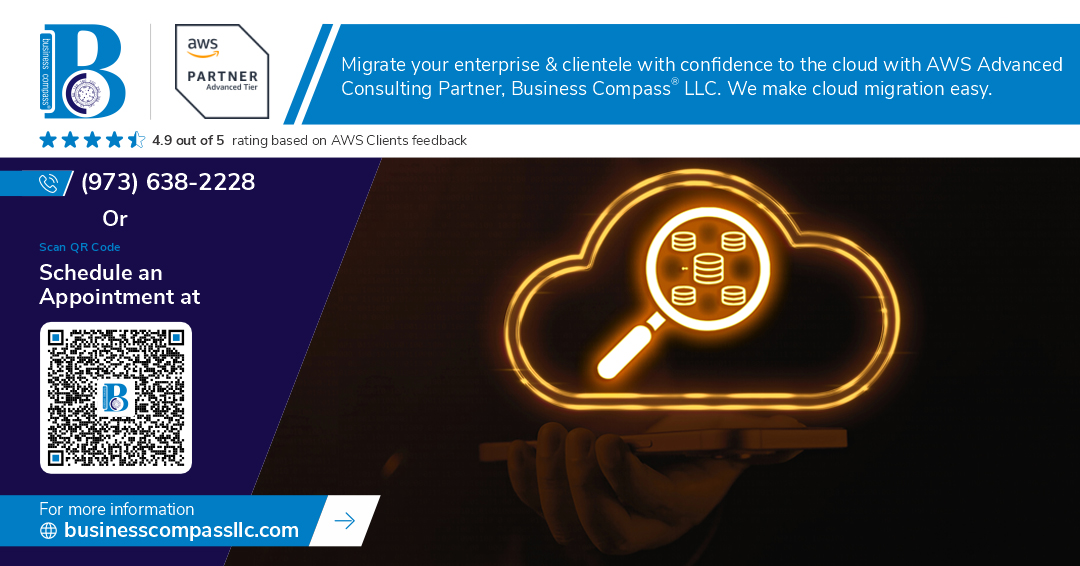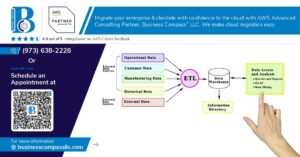Data lakes on AWS promise unlimited scalability and cost-effective storage, but without proper implementation, they quickly become expensive data swamps that nobody can navigate or trust. This guide is designed for data engineers, cloud architects, and IT leaders who need to build production-ready data lakes that teams can actually discover, access, and rely on.
You’ll learn how to architect secure data lake implementation on AWS that balances accessibility with compliance requirements. We’ll walk through proven data discoverability techniques that help your teams find the data they need without endless searches through poorly organized repositories.
The guide covers three critical areas: setting up AWS data governance frameworks that automatically enforce data quality controls, implementing security layers that protect sensitive information while enabling self-service analytics, and optimizing data lake performance to keep costs manageable as your data volumes grow.
By the end, you’ll have a practical roadmap for transforming your AWS data lake architecture from a chaotic data dumping ground into a well-organized, secure foundation that actually accelerates your organization’s data initiatives.
Understanding Data Lake Architecture on AWS
Core components and services for modern data lakes
AWS provides a comprehensive suite of services that form the backbone of any robust data lake architecture. Amazon S3 serves as the primary storage foundation, offering virtually unlimited capacity with 99.999999999% durability. AWS Glue acts as the serverless ETL engine, automatically discovering and cataloging your data while handling complex transformations. Amazon Athena enables SQL queries directly against S3 data without infrastructure management, while AWS Lake Formation simplifies data lake setup with centralized permissions and governance. Amazon EMR provides managed big data processing capabilities, and AWS DataSync ensures secure data transfer from on-premises systems.
Storage layers and data organization strategies
Effective data lake organization requires a well-structured storage hierarchy that supports both current needs and future growth. The raw data layer stores unprocessed information in its original format, maintaining data lineage and audit trails. The curated layer contains cleaned, validated, and transformed data optimized for analytics workloads. Amazon S3’s prefix-based organization allows logical partitioning by date, region, or business unit, improving query performance and reducing costs. Implementing a medallion architecture with bronze (raw), silver (cleansed), and gold (business-ready) layers provides clear data progression stages while maintaining governance controls throughout the pipeline.
Integration with AWS analytics ecosystem
Modern data lakes seamlessly integrate with AWS’s extensive analytics ecosystem to deliver comprehensive insights. Amazon Redshift Spectrum extends data warehouse capabilities directly to S3 data, enabling complex analytics across structured and semi-structured datasets. AWS QuickSight connects to multiple data sources for interactive dashboards and business intelligence reporting. Amazon Kinesis handles real-time data streaming, while AWS Batch processes large-scale compute workloads. Amazon SageMaker enables machine learning model development and deployment using data lake assets. This integrated approach eliminates data silos and reduces the complexity of moving data between services.
Cost optimization through intelligent tiering
AWS offers sophisticated storage classes and lifecycle policies that dramatically reduce data lake costs while maintaining accessibility. S3 Intelligent-Tiering automatically moves data between frequent and infrequent access tiers based on usage patterns. Glacier and Glacier Deep Archive provide long-term archival storage at significantly lower costs. Implementing automated lifecycle policies ensures data transitions to appropriate storage classes as it ages. S3 Storage Lens provides organization-wide visibility into storage usage and optimization opportunities. Combined with Reserved Instances for compute services and Spot Instances for batch processing, these strategies can reduce total data lake costs by 40-60%.
Implementing Data Discoverability Solutions
Automated metadata extraction and cataloging
Modern AWS data lake implementations rely on automated metadata extraction to eliminate manual cataloging bottlenecks. AWS Glue crawlers scan diverse data sources including S3 buckets, RDS databases, and streaming data to automatically detect schemas, file formats, and data types. These crawlers run on scheduled intervals or trigger-based events, ensuring metadata stays current as new data arrives. The extraction process captures technical metadata like column names, data types, and file sizes, while also identifying semantic relationships between datasets. Custom classifiers can be configured to handle proprietary formats or complex nested structures that standard crawlers might miss.
AWS Glue Data Catalog for centralized discovery
The AWS Glue Data Catalog serves as the central registry for all data lake metadata, providing a unified view across multiple AWS services. This serverless catalog integrates seamlessly with Amazon Athena, EMR, and Redshift Spectrum, enabling consistent data discovery experiences. The catalog stores table definitions, partitions, and schema evolution history, making it easy to track changes over time. Data teams can search across thousands of tables using natural language queries or filter by specific attributes like data source, creation date, or business domain. The catalog also supports cross-account sharing, allowing organizations to maintain data governance while enabling discovery across business units.
Tagging strategies for improved searchability
Strategic tagging transforms raw metadata into searchable, organized information that accelerates data discovery. Effective tagging strategies combine automated tags from crawlers with custom business tags that reflect organizational context. Common tag categories include data classification (public, internal, confidential), business domains (finance, marketing, operations), data quality scores, and update frequency. Consistent tag taxonomies should be established early, with clear naming conventions and mandatory vs. optional tags defined. Tags can also indicate data lifecycle stages, compliance requirements, and approved usage patterns. Search functionality becomes powerful when teams can filter datasets using multiple tag combinations to find exactly what they need.
Data lineage tracking for transparency
Data lineage tracking provides end-to-end visibility into how data flows through your AWS data lake architecture, from source systems to final consumption points. AWS Glue automatically captures lineage information during ETL jobs, showing which datasets were transformed, combined, or derived from others. This lineage graph helps data teams understand dependencies, assess impact of schema changes, and troubleshoot data quality issues faster. Visual lineage maps display upstream and downstream relationships, making it easier to identify critical data paths and potential failure points. Lineage information also supports compliance requirements by documenting data transformations and providing audit trails for sensitive datasets.
Self-service data exploration tools
Self-service tools democratize data access by enabling business users to explore AWS data lake contents without technical expertise. Amazon QuickSight connects directly to the Glue Data Catalog, allowing users to build dashboards and visualizations from discovered datasets. Jupyter notebooks running on SageMaker provide interactive exploration capabilities for data scientists who need deeper analytical capabilities. These tools integrate with the catalog’s search functionality, so users can discover relevant datasets through natural language searches or browse by tags and categories. Role-based access controls ensure users only see data they’re authorized to use, while automated data profiling provides instant insights into data quality, distribution, and completeness before analysis begins.
Building Robust Security Frameworks
Identity and Access Management Best Practices
AWS data lake security starts with implementing least-privilege access through IAM roles and policies. Create granular permissions using resource-based policies that control access to specific S3 buckets and objects. Use AWS Lake Formation for simplified permission management, enabling column-level access controls and row-level filtering. Implement multi-factor authentication for all administrative accounts and regularly rotate access keys. Set up cross-account access patterns using IAM roles rather than sharing credentials, and establish automated access reviews to remove unused permissions.
Encryption at Rest and in Transit Implementation
Deploy comprehensive encryption strategies across your secure data lake implementation. Configure S3 default encryption using AWS KMS customer-managed keys for granular control over encryption operations. Enable SSL/TLS for all data transfers and use AWS PrivateLink endpoints to keep traffic within the AWS network. Implement client-side encryption for highly sensitive datasets and establish key rotation schedules. Use AWS CloudTrail to monitor all encryption key usage and access patterns, creating audit trails for compliance requirements.
Data Classification and Sensitivity Labeling
Establish automated data classification workflows using AWS Macie to identify personally identifiable information, financial data, and other sensitive content. Create standardized sensitivity labels that align with your organization’s data governance policies. Implement tagging strategies that propagate classification metadata throughout the data lifecycle. Use AWS Config rules to enforce classification requirements and automatically flag untagged resources. Integrate classification results with access control policies to ensure appropriate security measures are applied based on data sensitivity levels.
Compliance Automation for Regulatory Requirements
Build automated compliance monitoring using AWS Config and AWS Security Hub to track adherence to regulations like GDPR, HIPAA, and SOX. Create custom compliance rules that validate data lake configurations against regulatory standards. Implement automated remediation workflows using AWS Lambda functions that correct non-compliant resources. Set up continuous monitoring dashboards that provide real-time compliance status across your AWS data governance framework. Use AWS Artifact for accessing compliance reports and establish regular compliance assessments through automated scanning and reporting mechanisms.
Establishing Data Governance and Quality Controls
Data lifecycle management policies
Creating solid data lifecycle policies for your AWS data lake means setting up automated rules that handle data from creation to deletion. AWS Lake Formation and S3 lifecycle policies work together to automatically move older data to cheaper storage classes like Glacier, while applying retention rules based on regulatory requirements. Smart organizations define clear stages – from hot data in S3 Standard to archived data in Glacier Deep Archive – with automatic transitions triggered by age, access patterns, or business rules.
Quality monitoring and validation pipelines
Building quality controls into your data pipeline catches issues before they spread throughout your data lake. AWS Glue DataBrew and custom Lambda functions can validate schema compliance, detect null values, and flag data anomalies in real-time. Set up CloudWatch alarms to trigger when quality metrics drop below thresholds, and use Step Functions to orchestrate complex validation workflows. The key is embedding these checks directly into your ETL processes rather than treating them as an afterthought.
Schema evolution and versioning strategies
Managing schema changes across a massive data lake requires a strategic approach that balances flexibility with backward compatibility. AWS Glue Schema Registry acts as your central hub for versioning, while Apache Iceberg tables provide native support for schema evolution without breaking existing queries. Implement semantic versioning for your schemas and maintain compatibility matrices that show which data consumers can handle specific schema versions. When rolling out changes, use blue-green deployment patterns to test new schemas against existing workloads before switching over completely.
Performance Optimization and Monitoring
Query performance tuning techniques
Optimizing query performance in AWS data lakes requires strategic partitioning, data format selection, and indexing. Use columnar formats like Parquet with Amazon Athena to reduce scan times by 90%. Implement partition pruning by organizing data hierarchically (year/month/day) to minimize data scanned. Leverage Amazon Redshift Spectrum for complex queries requiring joins across large datasets. Set up query result caching and use EXPLAIN plans to identify bottlenecks. Compress data using GZIP or Snappy algorithms to reduce I/O overhead and improve throughput.
Real-time monitoring and alerting systems
Deploy Amazon CloudWatch dashboards to track query execution times, data ingestion rates, and storage utilization across your data lake performance optimization infrastructure. Configure custom metrics for monitoring data freshness and pipeline health. Set up automated alerts when query response times exceed thresholds or when data quality issues arise. Use AWS X-Ray for distributed tracing of complex data processing workflows. Implement log aggregation through CloudWatch Logs to correlate performance issues with specific queries or user activities for rapid troubleshooting.
Resource utilization optimization
Right-size compute resources by analyzing historical usage patterns and implementing auto-scaling policies for EMR clusters and Glue jobs. Use Amazon S3 Intelligent Tiering to automatically move infrequently accessed data to cheaper storage classes. Optimize memory allocation for Spark applications by monitoring garbage collection patterns and adjusting executor configurations. Implement resource tagging strategies to track costs per project or department. Schedule batch processing during off-peak hours to reduce compute costs while maintaining SLA requirements for data availability.
Scalability planning for growing datasets
Design elastic architectures that automatically scale compute and storage resources based on demand patterns. Implement data lifecycle management policies to archive old data to S3 Glacier while keeping recent data in standard storage tiers. Use AWS Lake Formation blueprints to standardize data ingestion patterns across growing data sources. Plan for multi-region deployments to handle geographic data distribution requirements. Establish capacity planning frameworks that forecast storage growth and compute needs based on business projections and historical usage trends.
Practical Migration and Deployment Strategies
Legacy system integration approaches
Moving from traditional data warehouses to AWS data lake architecture requires careful planning and strategic integration methods. Extract, transform, and load (ETL) processes need redesigning to handle unstructured data formats, while maintaining existing business intelligence workflows. AWS Database Migration Service and AWS Glue provide seamless pathways for migrating relational databases, flat files, and streaming data sources. Legacy applications often require API-based connectors and custom adapters to ensure smooth data flow into Amazon S3 buckets without disrupting ongoing operations.
Phased implementation roadmap
Successful data lake migration AWS projects follow a structured three-phase approach starting with proof-of-concept development using non-critical datasets. Phase one establishes core infrastructure including S3 storage tiers, IAM policies, and basic cataloging through AWS Glue Data Catalog. Phase two introduces production workloads gradually, implementing data governance frameworks and security controls while monitoring performance metrics. The final phase scales operations across all business units, deploying advanced analytics capabilities, machine learning workflows, and comprehensive data quality controls throughout the organization.
Testing and validation frameworks
Robust testing protocols ensure data integrity and system reliability during AWS data lake deployment strategies implementation. Automated data validation pipelines verify schema consistency, data lineage accuracy, and transformation logic correctness using AWS Lambda functions and Step Functions. Performance testing evaluates query response times across different data formats and partition strategies, while security testing validates access controls and encryption mechanisms. Continuous integration pipelines integrate with AWS CodePipeline to automate testing workflows, enabling rapid deployment cycles while maintaining high data quality standards.
Change management for organizational adoption
Organizational transformation accompanies technical migration, requiring comprehensive training programs and stakeholder engagement strategies. Data teams need upskilling in cloud-native tools like Amazon Athena, EMR, and Redshift Spectrum, while business users require guidance on new self-service analytics capabilities. Executive sponsorship drives adoption by communicating business value and establishing clear success metrics. Change champions across departments facilitate knowledge transfer, address resistance points, and gather feedback for continuous improvement. Regular workshops, documentation updates, and hands-on training sessions accelerate user adoption and maximize return on investment.
Building a discoverable and secure data lake on AWS requires careful attention to architecture, governance, and ongoing optimization. The combination of proper data cataloging, robust access controls, and comprehensive monitoring creates a foundation that supports both security requirements and business intelligence needs. When you implement these practices together—from establishing clear governance frameworks to optimizing performance—your data lake becomes a reliable asset that teams can actually use and trust.
Getting started doesn’t have to be overwhelming. Focus first on setting up strong security foundations and basic discoverability tools, then gradually expand your governance and monitoring capabilities. The AWS ecosystem provides the building blocks you need, but success comes from thoughtful implementation that matches your organization’s specific requirements. Start small, measure what works, and scale your approach as your data lake proves its value to the business.




















